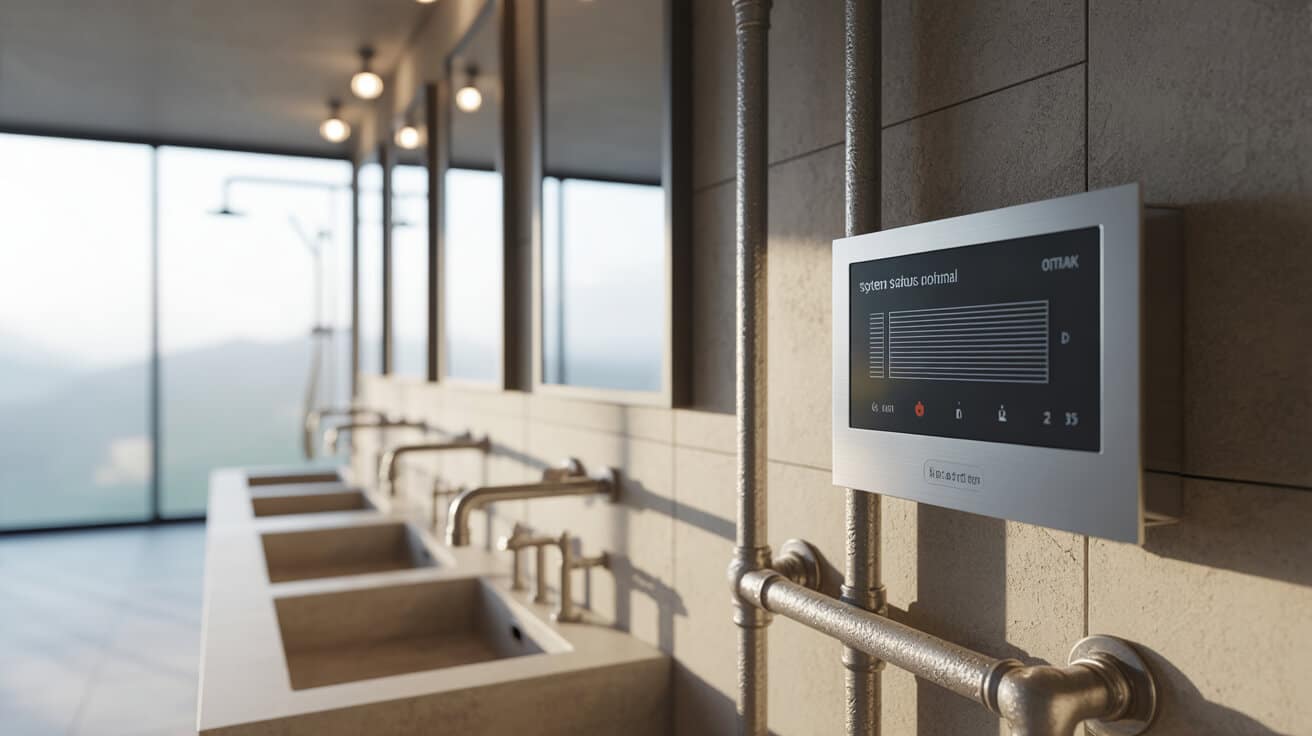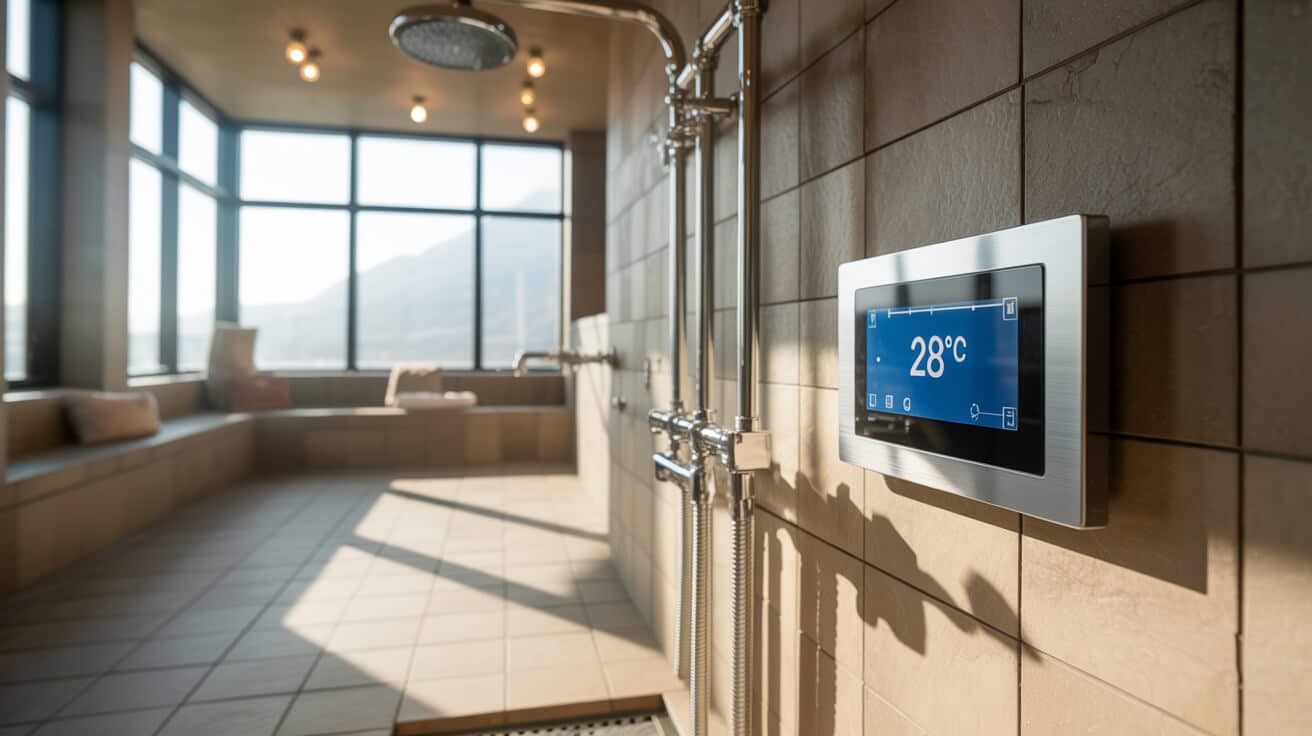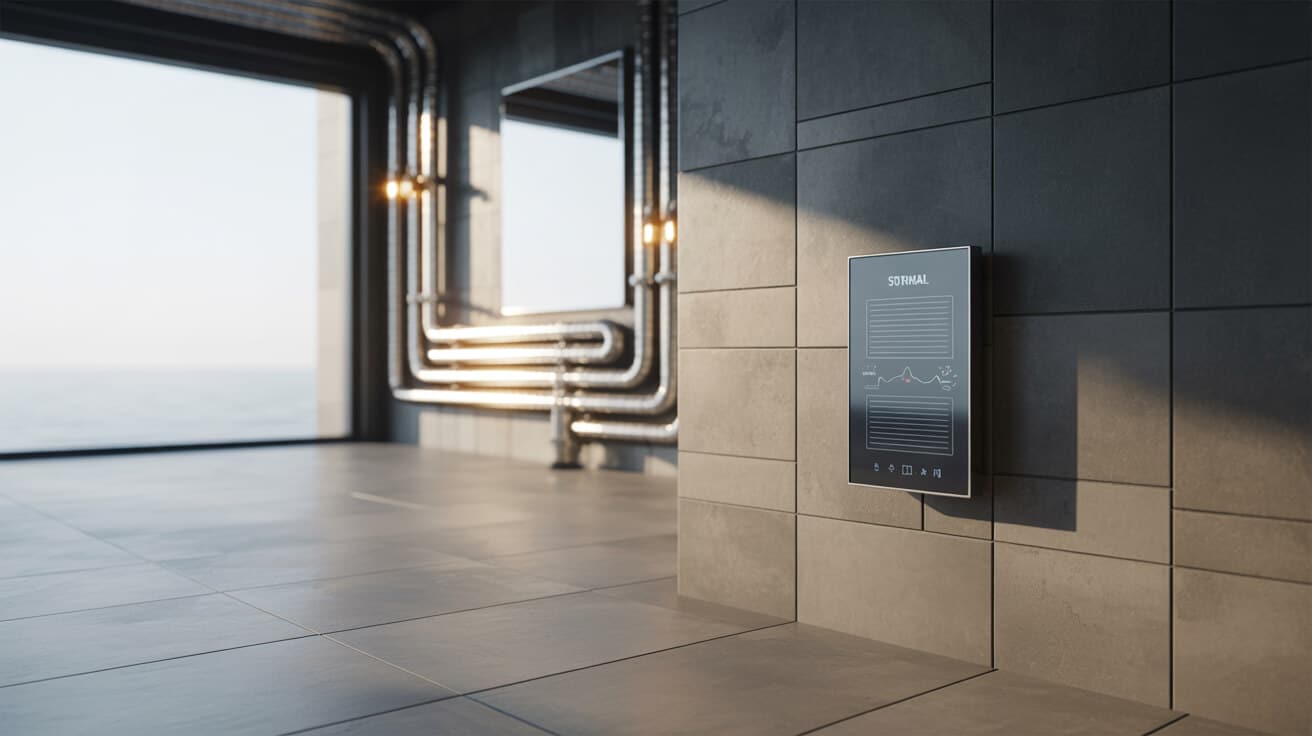Solar thermal technology has become a core feature for forward-thinking property managers, landlords, facilities directors, and energy-conscious homeowners seeking better control over their energy bills, compliance requirements, and environmental outcomes. The practice of solar thermal integration is characterised by a fusion of high-performance hardware, advanced digital controllers, and the nuanced expertise of certified plumbing and heating professionals. Your property’s transformation begins with site analysis, continues via tailored system design and compliance assurance, and culminates in an experience where hot water is reliably available—most often offsetting a substantial portion of your annual energy demand.
The recent proliferation of grants, regulatory incentives, and building standards has redefined solar water heating from an ecological luxury to an accessible and, in many cases, necessary best practice. Plumbers 4U and similar premium service providers have set new benchmarks by integrating advanced safety validation, tenant-focused maintenance protocols, and digital performance monitoring, placing optimal system efficiency, robust compliance, and peace of mind directly in your hands.
Lead
Solar thermal integration leverages environmentally renewable resources to produce hot water for everyday use, using a closed-loop circuit that gathers, transfers, and stores solar-derived heat. Roof-mounted flat plate or evacuated tube collectors heat a transfer fluid that delivers energy through insulated pipework to storage tanks—integrating seamlessly with backup sources, such as boilers or immersion heaters. Such systems include a spectrum of automated controls and digital safety monitors, ensuring consistent delivery even through seasonal changes or intermittent cloud cover.
Properties equipped with solar thermal hot water systems can experience a remarkable reduction in fuel dependency and operational costs, particularly when the design is undertaken by professionals adhering to the Microgeneration Certification Scheme (MCS) and Water Regulations Advisory Scheme (WRAS) standards. Facilities managers and landlords, in particular, benefit from improved Energy Performance Certificate (EPC) scores, legal compliance, and lower lifetime maintenance risks.
Etymology or name origin
The terminology “solar thermal” arises from the confluence of “solar”—derived from the Latin “solaris,” pertaining to the sun—and “thermal,” from the Greek “thermos,” meaning heat. Within the context of modern building services, “solar thermal hot water” distinguishes itself from “photovoltaic” technologies that produce electricity, instead focusing on systems whose sole mandate is the transference of solar energy into usable heat. In plumbing and heating practice, the phrase “integration” references the systematic engineering necessary to harmonise solar-derived heat with established supply, control, and safety protocols.
Overview / context
Traditional hot water systems have relied on gas, oil, or electric-powered appliances, leading to recurring debates over energy costs, carbon emissions, and reliability. Solar thermal integration is a distinct evolution, substituting a variable portion of fossil-fuel demand with a renewable, on-site source that is tied closely to the natural cycles of solar exposure.
Motivation for widespread adoption is multidimensional:
- Economic: Escalating energy prices and the desire for operational savings.
- Regulatory: Progressive tightening of Building Regulations (notably Parts G and L in the UK), making renewable integration a practical route to compliance.
- Sustainability: Increased focus on carbon reduction, ecosystem health, and market differentiation—especially among landlords and developers aiming for future-aligned assets.
- Grant landscape: Schemes such as Boiler Upgrade Scheme (BUS) and Energy Company Obligation (ECO4) lower capital entry, with strong demand for installations qualifying under standard-bearers like MCS and WRAS.
Plumbing and heating firms have evolved alongside these pressures, shaping their value offerings to encompass everything from integrative design and compliance documentation to tenant engagement, ongoing aftercare, and digital system monitoring.

History
Origins
Solar water heating technology traces its genesis to late nineteenth-century ingenuity. Early designs utilised darkened, water-filled containers exposed directly to sunlight, soon followed by more sophisticated prototypes that incorporated transparent covers and thermal insulation to capture radiant heat more effectively. Recognition of these systems’ practical merits spread from the United States to Europe, laying the groundwork for modern collector-based configurations.
Industrial emergence
The twentieth century marked the transition from rudimentary prototypes toward mass-market systems, particularly as energy costs and environmental awareness grew. Flat-plate collectors became commercially viable, fostering their installation in institutional settings—hotels, dormitories, and municipal facilities—before permeating the residential sector. Advances in fluid dynamics, materials science, and safety protocols fueled system robustness and user safety.
Contemporary evolution
The solar thermal sector expanded sharply across the United Kingdom and EU during the early 2000s, spurred by national Renewable Heat Incentive (RHI), zero-VAT rating, and direct grants. Simultaneously, the refinement of collector technologies, high-specification storage cylinders, and digital controllers rendered modern systems more efficient, durable, and user-friendly. Recent market fluctuation reflects policy changes, but the convergence of climate commitments, energy crises, and regulatory evolution continues to drive both innovation and adoption—especially within high-standard firms like Plumbers 4U, whose practices anticipate and often exceed emerging norms.
Technical concept and system architecture
Fundamental principles
solar thermal systems function by converting solar radiation into heat using absorbent surfaces exposed to the sun. A heat transfer fluid—either water or a glycol-water mixture for antifreeze protection—circulates via a closed-loop between collectors and a heat exchanger within the storage tank. Heat is released from the transfer fluid to the domestic hot water supply and then recirculated for continual collection.
Types of solar collectors
- Flat-plate collectors: combine a darkened absorber plate, insulation, and transparent cover. Their large surface area is optimised for direct and diffuse sunlight, rendering them suitable for a wide range of installations.
- Evacuated tube collectors: contain multiple parallel glass tubes, each evacuated of air to greatly reduce convection losses, enhancing efficiency in colder or less sunny climates.
- Integrated collector-storage units: merge heat absorption and storage functions, often found in compact or all-in-one system designs.
| Type | Key Advantage | Typical Use |
|---|---|---|
| Flat-plate | Simple, reliable | Family homes, moderate climates |
| Evacuated tube | More efficient, cold | U.K. winter, heavy commercial use |
| Integrated storage | Compact, retrofit | Apartments, space-limited properties |
Thermal storage and energy transfer
- Twin-coil cylinders: Most common, these use one coil for solar input, the other for auxiliary (boiler) heat.
- Thermal stores: Buffer systems that support multi-source inputs and flexible output to hot water and/or space heating.
- Pre-heat tanks: Provide staged temperature increase before water enters the main storage or distribution circuit.
Heat transfer compounds in every stage—correct sizing and insulation limit standby losses and safeguard system efficiency.
Integration with conventional heating
- Hybrid integration: Most UK systems retain existing gas or electric backup, coordinated via motorised valves and smart controllers.
- System compatibility: Your property’s heating model—combi, system, or regular boiler, heat pump, underfloor heating (UFH)—impacts design and controls.
- Smart orchestration: Differential temperature controllers activate the solar circuit only when a heat yield is present, sending solar-sourced heat to the cylinder but allowing seamless override by traditional sources as required.
Digital controls and monitoring
Modern controllers offer digital displays, programmable settings, and diagnostic feedback. Retrofitted or new installations can incorporate wireless monitoring, data-logging, and remote alerts, supporting both user confidence and proactive service from your selected provider.
Design, sizing, and installation
Assessment of site suitability
Site evaluation is essential before design. Factors examined include:
- Roof orientation and pitch: South-facing, 30–40° inclination is optimal.
- Shading analysis: Trees, chimneys, or adjacent buildings can reduce output.
- Structural integrity: Roof load assessments confirm suitability and need for reinforcements.
Calculation of collector area and tank volume
The sizing process calculates collector area (m²) and cylinder volume (litres) relative to occupant count, hot water usage, and local solar insolation. Inaccurate dimensioning can cause chronic underperformance or—worse—frequent stagnation and system fault.
Planning and permissions
UK policy generally permits installations without full planning permission outside of conservation or listed contexts. Compliance with Part G (hot water safety) and Part L (energy efficiency) of Building Regulations is mandatory; Plumbers 4U incorporates these compliance checks within our services.
Mounting, roof and pipework considerations
Proper support rails, weatherproof flashings, and pipe lagging minimise water ingress and thermal losses. Pipework routing seeks the shortest possible insulated run to and from the cylinder, minimising the risk of heat loss or freezing.
Safety, health, and disruption management
Health and safety risk assessments are performed for all projects, especially regarding roof access, electrical connections, and thermal hazards. Work sequences are planned to minimise interruption to your hot water availability and dwelling or business function.
Operation and user experience
Daily and seasonal cycles
Performance varies by daily sunlight and seasonal cycles. In summer, solar output may almost entirely supply your property’s hot water needs, while in winter, supplementary heat is more routinely required. Solar fractions—the proportion of hot water met via solar—range from 40% to above 60% in optimised scenarios.
Interaction with smart thermostats and connectivity
Advanced systems increasingly feature smart controls. These track weather forecasts, usage patterns, and tank temperature levels. Users—or your company’s facilities staff—can interface via app or touch-panel, schedule immersion backup, or activate holiday modes.
Manual versus automated operation
Most systems support exception handling via a user-accessible panel, allowing for system override (e.g., for servicing or testing). For landlords and managers, clear guidance and digital logs support tenant communication and compliance.
Monitoring and troubleshooting basics
Key checks include:
- Pressure readings: Should stay within prescribed band.
- Glycol level: Depletion signals leaks or ageing.
- Error codes: Modern controllers flag faults for prompt resolution.
- Inspection routine: Facilities and property managers, as well as Plumbers 4U staff, can check these during scheduled service.

Performance, economics, and incentives
Energy and bill savings
Properly installed solar thermal systems routinely meet more than half of a single-family home’s annual hot water demand in the UK. Larger properties or businesses with continuous demand, such as hotels, see increased solar fractions. Annual savings vary, typically £80–£150 for homes, with higher values for commercial or multi-unit housing.
Carbon and CO₂ impact
On-site solar water heating offers clear carbon reduction—each kWh delivered offsets gas or electric heating, often improving your organisation’s compliance position under local authority carbon budgets or sustainability standards.
Funding, grants, and payback periods
- Boiler Upgrade Scheme (BUS): Currently provides a grant up to £7,500 for heating technologies, with eligibility extending to solar thermal as a secondary technology.
- ECO4 (Energy Company Obligation): Incentivizes upgrades for households in fuel poverty or with sub-optimal EPCs.
- Payback estimates: Typically 7–15 years, depending on system size, user habits, and energy costs; commercial installations with higher, steady demand may see even faster returns.
Impact on EPC rating
Solar thermal integration often increases a property’s EPC banding, with particular value for rental portfolios, commercial landlords, and regulatory-compliant lettings.
| Property Type | Typical Solar Fraction | Payback Period |
|---|---|---|
| Detached Home | 55–65% | 7–12 years |
| Apartment Block (central) | 40–55% | 8–14 years |
| Commercial (office, hotel) | 55–70% | 5–10 years |
Regulation and professional standards
Building regulations (Parts G, L)
All UK solar thermal installations must comply with:
- Part G: Hot water safety—prevents overheating, scalding, and water contamination.
- Part L: Energy efficiency—demands high insulation, efficient controls, and integration.
Unvented hot water (‘G3’) legalities
Any work involving unvented hot water cylinders must be performed by G3-certified professionals. This guarantees installation of temperature and pressure relief valves, compliant discharge pipework, and mandatory signage.
Microgeneration Certification Scheme (MCS)
Essential for grant eligibility, MCS certification ensures adherence to quality, performance, and consumer protection benchmarks. Plumbers 4U’s accredited services ensure every system meets or exceeds these standards.
WRAS and water safety
All in-contact components must be WRAS-approved, ensuring compatibility with UK potable water and alignment with backflow prevention rules. Specifications often includes double non-return valves and air gap(s) as defined per system design.
Required accreditations and professional bodies
Installers commonly affiliate with:
- WaterSafe: National register of approved contractors.
- TrustMark: Government standard for consumer protection.
- Chartered Institute of Plumbing and Heating Engineering (CIPHE): Professional standards and continual development.
Grant and benchmark documentation
To access incentives, your property owner or agent must receive both the Benchmark commissioning logbook and MCS/installer certificate.
Maintenance, servicing, and risk control
Routine service checklist
Key tasks include:
- Glycol/antifreeze check and replacement (every 3–5 years, or as fluid degrades)
- Inspection and cleaning of collectors
- Check and recharge of expansion vessels
- Pressure and safety valve tests
- Controller reset and diagnostic review
- Insulation check of pipework and outdoor connections
Glycol and antifreeze management
The closed circuit’s heat transfer fluid prevents freezing and maintains efficiency. Over time, thermal stress and contamination degrade performance, underscoring the importance of scheduled drain-and-refill.
Legionella, scaling, and stagnation risk
- Legionella: Prevented by regular heating of tank to >60 °C, full system circulation, and proper design.
- Scaling: Addressed with anti-scale chemicals or periodic descaling in hard water areas.
- Stagnation: Controlled by controller logic (e.g. pump-overrun cycles) and correctly sized tanks, with smart data-logging to identify risks.
Troubleshooting and common failures
Failures may result from:
- Pump wear or failure
- Sensor/calibration drift
- Freeze or overheat (from controller faults)
Routine review by in-house managers or service contracts with Plumbers 4U provide rapid diagnosis and dispatch.
End-user responsibilities
Owners and managers maintain up-to-date service records, schedule maintenance, and ensure tenants or users are briefed on daily operation and safety.
Applications and property types
Residential installations
Solar thermal is suitable for virtually any single-family home with sufficient roof area, and is adaptable for apartment blocks via central plant designs. Retrofitting demands care with existing pipework or insulation.
Commercial and public sector
Hotels, care homes, schools, and pools benefit from scale economies—higher, reliable hot water loads yield faster payback and more reliable carbon savings.
Retrofitting and new build
Retrofitting requires custom pipework and possible replacement cylinders; new-builds maximise design flexibility and systems-level integration.
Multi-unit property challenges
- Shared metre and billing protocols
- Architectural/engineering for shared storage and distribution
- Documented aftercare for managers and occupants
Collector and circuit configurations
- Direct (open loop): Not common in UK climate (freeze risk)
- Indirect (closed loop): Most UK/IE systems; uses antifreeze-protected glycol
- Drainback: Prevents freeze and boiling via gravity-drained collector
- Hybrid solar-PV-thermal (PV-T): Combines electrical and thermal output
Hybrid integration
Frequently installed in concert with:
- air source heat pumps
- Photovoltaic panels
- Smart building controls
Optimal sequencing maximises renewable input throughout the year.
Competing hot water methods
- High-efficiency condensing gas or electric boilers
- Dedicated heat pumps (air, ground)
- Standalone electric immersion with timer or smart scheduling
Challenges, barriers, and limitations
Weather and seasonal constraints
Performance peaks in extended daylight months, declines in winter. Orientation and roof geography naturally affect system yield; flat or shaded aspects necessitate larger arrays or acceptance of lower returns.
Installation complexity barriers
- Roof access, loading, and water ingress management dictate feasibility and cost.
- Cosmetic/aesthetic objections in conservation areas.
- Building control/approval for historic assets.
Social, economic, and regulatory obstacles
- Initial capital investment, even after grants, can present sticker shock.
- Consumer trust and experience with subcontractor markets; Plumbers 4U’s user-first, compliant approach builds confidence in the procurement process.
- Ongoing record-keeping and documentation required for continued compliance.
Ongoing compliance and documentation
Quarterly, annual, and trigger-based documentation (e.g. after repairs, tenant change) support regulatory position and underwrite warranty claims.
Impact, influence, and legacy
Solar thermal systems have established new best practices for engineering, installation, and aftercare in the plumbing and heating sector. The boost to sustainability credentials and corporate social responsibility is complemented by measurable reductions in energy use and emissions. Market trends indicate a shift where landlord portfolios, facility managers, and responsible homeowners increasingly select integrated solar hot water to future-proof investments and regulatory outcomes. Plumbers 4U’s leadership, with adherence to the highest standards, advanced digital support, and customer-centric systems, has directly influenced the mainstreaming of solar thermal in high-compliance projects.
Future directions, cultural relevance, and design discourse
Emergent system designs incorporate AI-enabled diagnostics, dynamic scheduling, and bi-directional communication with grid and renewable systems. Regulatory authorities signal intentions for stricter enforcement, broader minimum standards, and targeted incentives. Social drivers—everything from climate anxiety to visible roof-level technology—are deepening solar thermal’s stamp on new-build and retrofit architecture.
Design conversations increasingly invoke “whole-building” thinking: integrated controls, combined water/space heating, renewable stacking, and multi-stakeholder participation from inception to aftercare. Media, housing policy, and sustainability benchmarks are converging to make solar thermal a symbol of organisational and personal environmental stewardship. The evolution underway will further entwine engineering, regulation, and culture, rendering solar thermal hot water integration both resilient and aspirational within the future landscape of property design and management.

